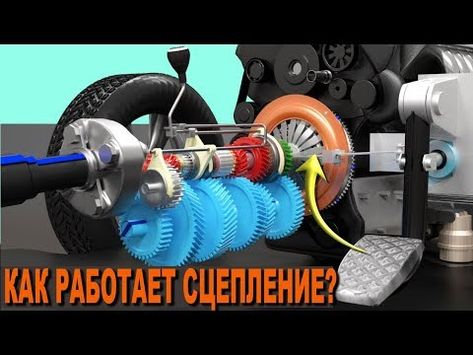JavaScript is disabled. For a better experience, please enable JavaScript in your browser before proceeding.
Welcome to Netrider!
A compelling community experience for all motorcyclists, since 1998.
Discussion, Rides/Events Calendar, Showcases, Reviews, Classifieds, Blogs, and Resources.
Joining is free!
Log in Register
hi. recently i had to replace my starter clutch. it hasn't been working fine since i bought the bike. so i replaced it with a good used one and it works fine now
so below you can see a CBR250RR engine (the starter clutch side). "A" is the gear set which is driven by the starter motor. "B" is the starter clutch itself which is also connected to the "A" by a gear wheel. so my question is
when we start the bike let's assume the "A" rotates counter clockwise. so the "B" (starter clutch) rotates clockwise while grabbing the crank which makes the crank to rotate. we all know that the starter clutch is a one way clutch. so just after the start up does the crank rotate in the other direction (counter clockwise) ? so that the crank releases itself from the starter clutch. otherwise the starter motor and the "A" would be rotating all the time during the ride. so my question is what forces the crank to rotate in the other direction just after the start up? can someone explain how it happens. thank you very much
we all know that the starter clutch is a one way clutch. so just after the start up does the crank rotate in the other direction (counter clockwise) ? so that the crank releases itself from the starter clutch. otherwise the starter motor and the "A" would be rotating all the time during the ride. so my question is what forces the crank to rotate in the other direction just after the start up? can someone explain how it happens. thank you very much
Sort by date Sort by votes
Why does it need to reverse direction ?
When you engage the starter, the clutch locks the shaft to the gear, effectively turning the engine and starting it.
Once the engine is running then the clutch disengages and allows the starter motor gear to spin freely.
So it depends where the rotational force is coming from.
Vote:
Upvote 0
Stever42 said:
Why does it need to reverse direction ?
When you engage the starter, the clutch locks the shaft to the gear, effectively turning the engine and starting it.
Once the engine is running then the clutch disengages and allows the starter motor gear to spin freely.
So it depends where the rotational force is coming from.Click to expand...
yea initially it grabs the crank so crank starts to rotate with it. if the crank rotates in the same direction how does it disengage from the starter clutch actually? it's a one way clutch. so if the crank rotates in the same direction the starter clutch gear will also be driven. can you explain it a bit. may be i misunderstood something. thank you.
Vote:
Upvote 0
Engine faster than starter motor.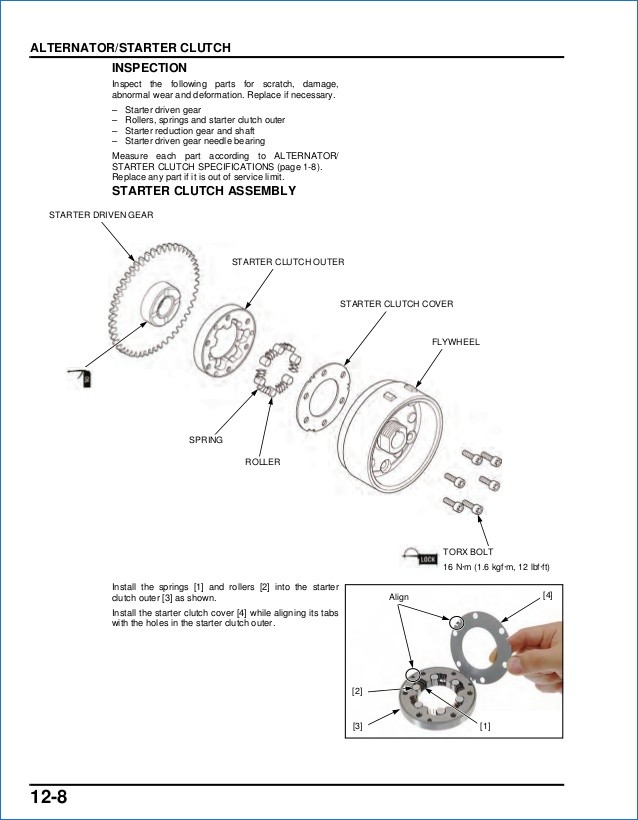 ..
..
Vote:
Upvote 0
Starter clutch is like pedalling a free wheel bicycle. When you pedal it engages. When you stop pedalling it disengages
Vote:
Upvote 0
The driving gear on the starter is on a spiral thread.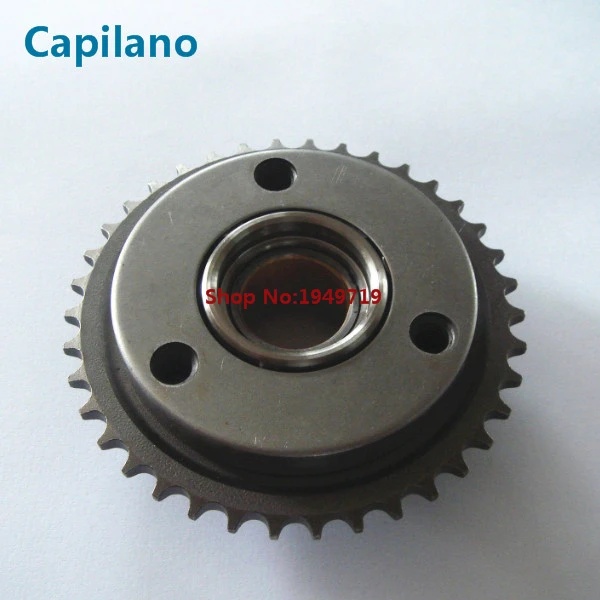 When the starter runs, it throws the gear outward to engage the crank. Then when engine fires, the cranks speed forces the starter inwards and disengaging. Then you let go starter button, and all’s happy.
When the starter runs, it throws the gear outward to engage the crank. Then when engine fires, the cranks speed forces the starter inwards and disengaging. Then you let go starter button, and all’s happy.
Edit. Maybe this applies more to cars.
Vote:
Upvote 0
I used to drive a Honda Scamp N360. They didn't bother with all this starter ratchet malarky.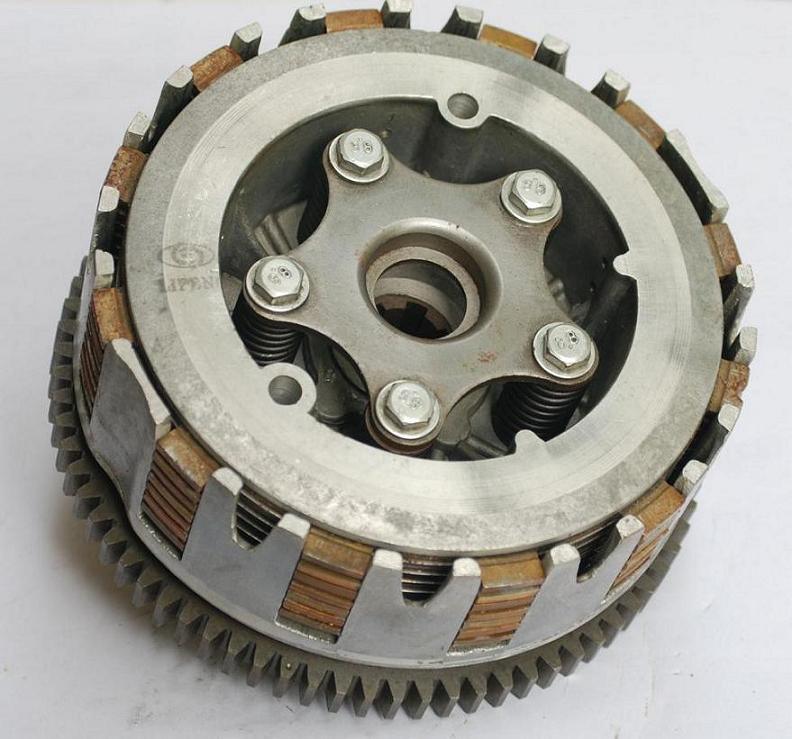 To start it, they just connected the battery to the generator and it worked like a motor.
To start it, they just connected the battery to the generator and it worked like a motor.
You want a heater? OK here is the air that's already been used to cool the engine. Oily smelling and all that.
Vote:
Upvote 0
Gooza said:
The driving gear on the starter is on a spiral thread. When the starter runs, it throws the gear outward to engage the crank.
Then when engine fires, the cranks speed forces the starter inwards and disengaging. Then you let go starter button, and all’s happy.
Edit. Maybe this applies more to cars.
Click to expand...
That's a Bendix drive and usually isn't usually used in bikes - or not the bikes I have seen anyhow
Vote:
Upvote 0
Here's a closer look at a Honda starter clutch assembly;
A closer look at the starter clutch - Honda CX500, GL500, CX650, GL650 - MotoFaction
. ..and here's a video showing how that works in practice; go to about 1 minute or so for the visual:
..and here's a video showing how that works in practice; go to about 1 minute or so for the visual:
In the CX motor shown above the starter rotates the starter reduction gear, which is a smaller gear that mates to the starter driven gear, which is a larger gear that sits at the back of the flywheel and has a round face that is one of the two surfaces that the starter rollers sit against - the other is the inside of the flywheel. When the starter turns the gears the rollers are caught and transfer the force to the flywheel, which turns the motor. Once the motor is going faster than the starter driven gear the rollers are no longer caught. Does that all make sense?
Vote:
Upvote 0
thank you all for your replies.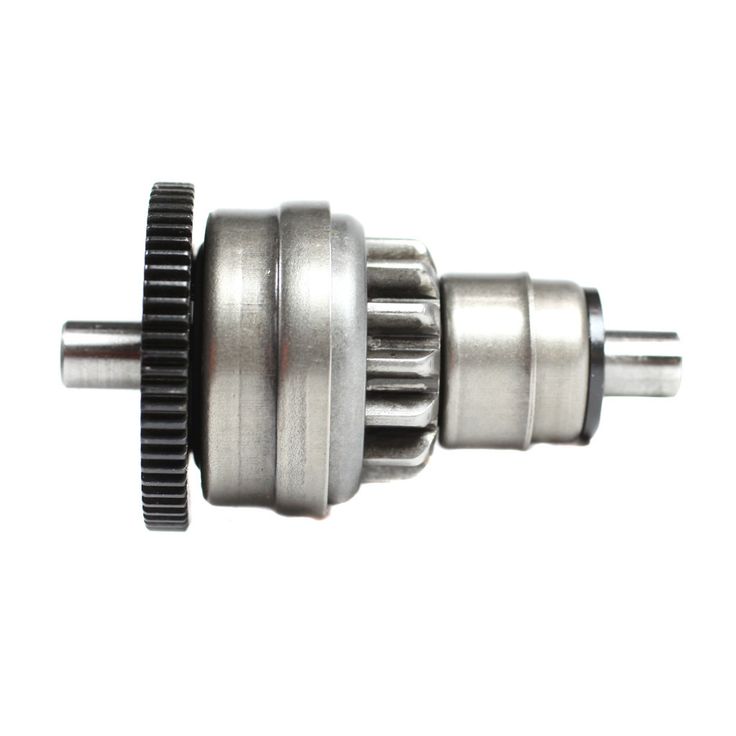 very informative
very informative
i drew a simple drawing, just to explain what i'm trying to understand
A is the outer gear which is connected to the motor.
B is the inner part which is connected to the crank shaft.
so let's assume it cranks clockwise when we push the start button
so first the outer gear rotates (A). but it also catches the B. B is connected to the crank shaft resulting cranking the engine. so when the engine runs we release the start button. since the engine is running in the same direction the B should also catch the A. am i right ? if the engine runs the other direction it would be ok. but since it's running in the same direction how it releases itself from the outer gear (A)?
we can think as the engine speed increases the rollers are no longer caught. but why it's made as a one way clutch then ? i don't have a good mechanical knowledge but i always wonder how it works. thank you.
Vote:
Upvote 0
That's kind of right. When the starter button's pushed, the starter turn the engine, with the engine resisting it. The resistance makes the "rollers" in the starter (sprag) clutch wedge in and transmit drive to the engine. The engine fires and suddenly runs faster than the starter motor, so the rollers are released from their wedged in position and don't transmit any more drive.
When the starter button's pushed, the starter turn the engine, with the engine resisting it. The resistance makes the "rollers" in the starter (sprag) clutch wedge in and transmit drive to the engine. The engine fires and suddenly runs faster than the starter motor, so the rollers are released from their wedged in position and don't transmit any more drive.
The only time the engine transmits drive through the sprag is if it turns backwards. It's a good idea to not turn a bike engine backwards. It can damage the sprag if it's a bit weak. On one of my old thumpers (650cc single) they had a nasty habit of stopping on the compression stroke and occasionally firing the piston back down the cylinder in reverse. The sprag was strong enough to handle it so the starter idle gear shaft just smashed out of the crankcase instead. Later models had a torque limiting clutch built into the starter gear so it could slip if that happened.
Renold Plc - How does a Sprag Clutch Freewheel work?
Last edited:
Vote:
Upvote 0
wokwon said:
I used to drive a Honda Scamp N360.
They didn't bother with all this starter ratchet malarky. To start it, they just connected the battery to the generator and it worked like a motor.
You want a heater? OK here is the air that's already been used to cool the engine. Oily smelling and all that.
Click to expand...
How many times did your friends pick it up and move it to odd locations?
Vote:
Upvote 0
gizzo said:
That's kind of right.
When the starter button's pushed, the starter turn the engine, with the engine resisting it. The resistance makes the "rollers" in the starter (sprag) clutch wedge in and transmit drive to the engine. The engine fires and suddenly runs faster than the starter motor, so the rollers are released from their wedged in position and don't transmit any more drive.
The only time the engine transmits drive through the sprag is if it turns backwards. It's a good idea to not turn a bike engine backwards. It can damage the sprag if it's a bit weak. On one of my old thumpers (650cc single) they had a nasty habit of stopping on the compression stroke and occasionally firing the piston back down the cylinder in reverse. The sprag was strong enough to handle it so the starter idle gear shaft just smashed out of the crankcase instead. Later models had a torque limiting clutch built into the starter gear so it could slip if that happened.
Renold Plc - How does a Sprag Clutch Freewheel work?Click to expand.
..
got it thank you
Vote:
Upvote 0
VTR 250 starting issues, starter wont crank when hot
Scraps
New Clutch Dragging
Dedd
Repairing/replacing starter motor on VTR250?
Gooza
Vulcan S - Bike turned off while overtaking - Need electrical advice
23
Godoh
Show and tell of my first real boo-boo
2
Jumblutikus
Share:
Facebook Twitter Reddit Tumblr WhatsApp Email Share Link
Rick's Motorsport Electrics has been providing aftermarket starter motors for over 30 years.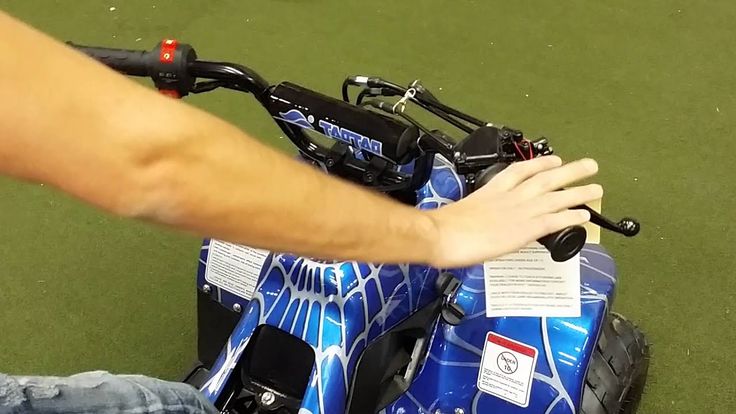 Rick's manufacturers new and rebuilds custom starter motors for motorcycles, ATVs, UTVs, off road, street bikes, & snowmobiles.
Rick's manufacturers new and rebuilds custom starter motors for motorcycles, ATVs, UTVs, off road, street bikes, & snowmobiles.
All rebuilt stators require a core exchange and come with a one year replacement warranty. On all of our starter motor rebuilds, the entire armature is redone as well as any brushes/brush plates. Most rebuilt starter motors have a core charge that will be refunded once you send your old piece back to us. .
Call us at 603-329-9901 to inquire about a custom rebuild on your old starter motor.
A starter motor is a device that turns your engine over when you start your vehicle. As the starter motor rotates the crankshaft, the combustion process starts. Once the engine is running, the starter motor disengages.
Read on to learn more about how starter motors work and how Rick’s Motorsport Electrics can help you find the perfect new or custom rebuilt starter motor for your motorcycle, ATV, UTV, street bike, or snowmobile.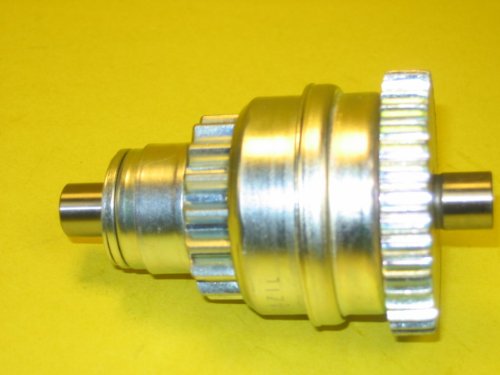
Internal combustion engines aren’t able to start themselves — they need some type of external source of power to get up and running. This is where starter motors come in.
Starter motors are generally electric motors that engage when you turn the ignition and push the starter button, or turn the key to the start position. Once engaged, they turn the engine over and allow it to start sucking in air.
Most motorcycles, ATVs, watercraft, and side by sides use a system that direct-drives a one way clutch attached to the crankshaft of the engine. Once the engine starts, the one way clutch disengages the starter motor from the running engine.
A second type of starter engagement is the typical automotive system that launches a pinion gear to engage with a ring gear attached to the engine’s crankshaft. As the engine starts, the pinion is retracted and disengages itself from the running engine.
Starter motors can have a number of issues that can lead to their damage or failure.
A starter motor that is drawing too much amperage may cause the engine to crank very slowly. Starter motors may also have issues with the solenoid, which may or may not be built directly into the starter.
Starters can also have mechanical issues, in which case a rebuild or replacement is typically necessary. Starter motors may also fail if the teeth on the ring gear or one-way clutch are damaged. In these cases, the flywheel or clutch may have to be replaced.
Starter motors are one of the most used and most important components of any vehicle. They are what helps start the engine and allow it to run on its own. The starter is the piece that sets everything else into motion, so it’s important to ensure that it is always in good condition.
Starter motors are put under a lot of pressure, and as they age, they are likely to endure some problems, from gear tooth failure to windings coming loose or shorting out.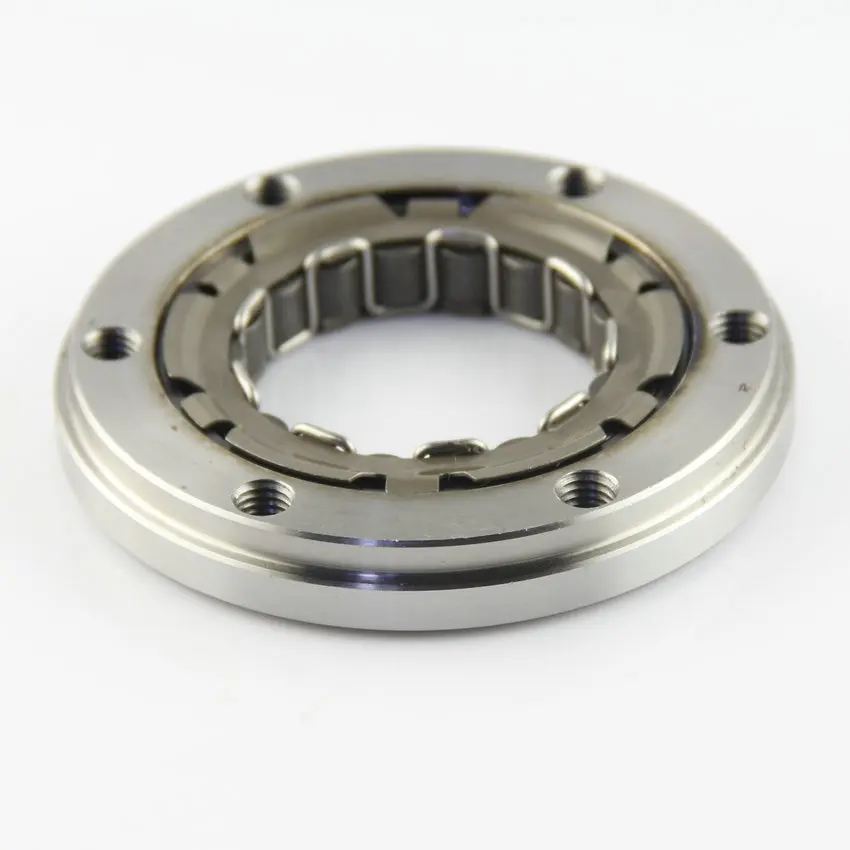 When this happens, it’s important to repair, rebuild, or replace the starter as quickly as possible.
When this happens, it’s important to repair, rebuild, or replace the starter as quickly as possible.
Rick's Motorsport Electrics has been providing high-quality aftermarket starter motors for over 30 years. We offer our customers new and rebuilt custom starter motors for motorcycles, ATVs, UTVs, street bikes, snowmobiles, and other vehicles.
We understand the importance of quality workmanship, which is why we only use high-quality materials and industry-leading manufacturing standards to create best-in-class starter motors that bolt on as direct replacements for OEM.
All rebuilt starters require a core exchange and come with a one-year replacement warranty. On all of our starter motor rebuilds, the entire armature is replaced or reconditioned as well as any brushes/brush plates. Most rebuilt starter motors have a core charge that will be refunded once you send your old piece back to us.
Starter motors are a critical component in any motor vehicle. A broken or damaged starter motor can cause damage to your vehicle’s engine and prevent the engine from starting in the first place.
A broken or damaged starter motor can cause damage to your vehicle’s engine and prevent the engine from starting in the first place.
At Rick’s Motorsport Electrics, we’ve been rebuilding high-quality starter motors for over three decades. We’ll help you rebuild or replace your starter motor as quickly as possible so that you can get back out on (or off) the road.
05/13/2015
Most likely, you are reading this article either because your children's gasoline ATV or motorcycle for some reason does not start (does not work correctly), or you are just looking to this category of children's transport and trying to figure out what you want to get involved in.
Looking ahead, I want to warn everyone who does not have the appropriate skills necessary for maintenance, and is also not familiar with people who are willing to work with your equipment on the cheap, or at all, out of friendship: I strongly do not recommend messing with gasoline engines.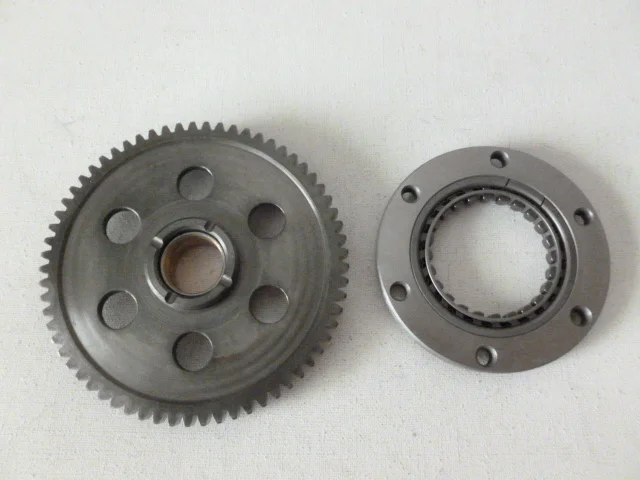 No matter how much the technique costs and how well it is done, you will have to delve into a bunch of nuances that will make your head spin. If you still want serious powerful equipment, pay attention to similar models with electric motors. They, as a rule, are made on the same chassis, but at the same time they have a bunch of advantages, the main of which is the absence of the need for maintenance. You will not need to keep in mind all sorts of restrictions, ignoring which can cripple an expensive toy. Breakdowns in such models are extremely rare and are not related to the engine. And the most powerful models go faster than gasoline "subcompacts". Plus a bonus in the form of a reverse gear.
No matter how much the technique costs and how well it is done, you will have to delve into a bunch of nuances that will make your head spin. If you still want serious powerful equipment, pay attention to similar models with electric motors. They, as a rule, are made on the same chassis, but at the same time they have a bunch of advantages, the main of which is the absence of the need for maintenance. You will not need to keep in mind all sorts of restrictions, ignoring which can cripple an expensive toy. Breakdowns in such models are extremely rare and are not related to the engine. And the most powerful models go faster than gasoline "subcompacts". Plus a bonus in the form of a reverse gear.
Let's get back to our sheep.
For those who want to dive into this issue especially deeply, especially since it will be extremely difficult to describe all possible malfunctions, I recommend entering a phrase like "common two-stroke engine malfunctions" into the search engine. The study of the material found will also save you from damaging the product "by ignorance.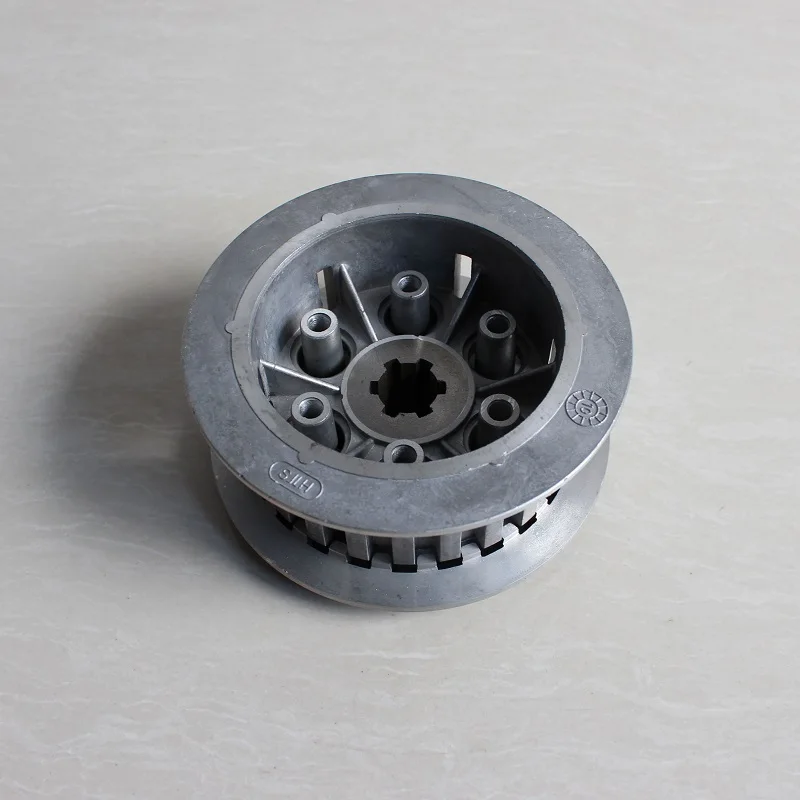 " Jokes aside, do it.
" Jokes aside, do it.
Now about the main malfunctions of children's gasoline ATVs.
The centrifugal clutch is perhaps the most delicate part of the entire system. Usually it fails either on the first day of operation, or after honestly serving and eventually worn out. Premature failure occurs for reasons that have little to do with the quality of the clutch itself. In the picture you can see his device.
The weak point is the springs, which can come loose from the hinges and get caught between the rotating parts due to vibration due to excessive resistance. That is, for example, when a low-powered children's quadric is forced to move off with wheels bogged down in the sand along the very axles or forcing it to wade through tall thick grass, this most excessive resistance appears. It is also worth avoiding starting off a steep hill.
If a breakdown does occur, there are two options left: replacing the entire clutch or just the springs. To implement both scenarios, you will have to remove the clutch. The procedure will most likely require the removal of the electric starter followed by the extraction of the rotor. When assembling the electric starter, use matches to fix the springs holding the brushes.
To implement both scenarios, you will have to remove the clutch. The procedure will most likely require the removal of the electric starter followed by the extraction of the rotor. When assembling the electric starter, use matches to fix the springs holding the brushes.
One of the reasons for the impossibility of starting the engine is the lack of ignition. The verification algorithm is quite simple: we unscrew the candle and put it on the body. If there is a spark, we are looking elsewhere, if not, we disconnect the wire coming from the magneto / ignition module to ground. If a spark appears when the latter is turned off, then you can relax, most likely nothing serious. AT 9In 5% of cases, this is an emergency stop button located on the steering wheel (rubber plug with a cord). Due to vibration, the plug could simply loosen the pressure on the button.
If the spark does not appear even after disconnecting the mass, then either it is time to replace the spark plug or the ignition unit.
The latter rarely fails enough to require replacement. If you hear the relay clicking, but the starter does not turn, there is a fairly high probability that this is a short circuit. No, there will be no burnt wires and pillars of sparks. It just won't spin. In this case, you will need to disassemble the electric starter and inspect its parts. In most cases, the cause of failure is the displacement of the electric starter housing as a result of vibrations. Adjust the housing with the adjusting screw and voila! The starter is working again.
Breakdowns usually result from careless handling. Usually the reason for the failure is a jumped-out spring. Recovery is possible, but it requires dexterity, physical strength and lots and lots of patience. I recommend looking for relevant videos on Youtube. For those who are too lazy to mess around, or their patience has already ended, I recommend contacting a lawn mower repair shop. There, your starter will be restored for less than five dollars.
There, your starter will be restored for less than five dollars.
www.istockphoto.com
on Russian roads abound. Therefore, the question of whether it is necessary to squeeze the clutch every time before starting the engine is still relevant. The opinions of the townsfolk on this matter are divided, but what do the experts think? The answer was found by the AvtoVzglyad portal.
Kristina Izvekova
In the last century, when the grass was greener and there were no traffic jams, drivers did not even have such a question - everyone automatically squeezed the clutch. However, since the collapse of the USSR, the auto industry has made a serious leap forward: the cars have become technically more advanced, and the need for some manipulations simply disappeared. And therefore, many thought about whether it is necessary to squeeze the left pedal before starting?
To find out, just pick up the car's operating manual - so you definitely do not miss and do not harm the units.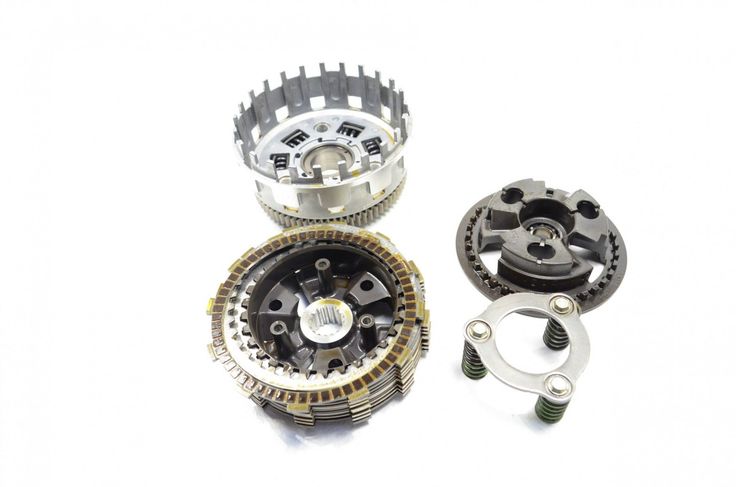 But if there is no time and desire to read a long and boring manual, we will try to explain briefly and to the point.
But if there is no time and desire to read a long and boring manual, we will try to explain briefly and to the point.
www.carzrus.net
Opponents of this manipulation claim that only beginners can use the clutch. Like, they will park, leaving the car in gear, but they will safely forget about it - they will start up without touching the pedals, the car, which is logical, will twitch and drive into a fence, another vehicle or a wall.
But then another question arises: how will the squeezed clutch save them from a collision? The car will still slowly roll if it is at an angle, but for now, a completely “green” driver will realize what's what, it will be too late. It is better then to advise them to make it a habit to start the engine on the "brake".
This is where their arguments, in fact, end - rather weak. Those drivers who, on the contrary, call for depressing the clutch before awakening the engine, prove their case much more convincingly.
1167838
computerizedautopro.com
442468
The depressed clutch allows you to start the engine without disturbing the gearbox shafts, which in turn removes additional load not only from the transmission itself, but also from the starter. In addition, since less electricity is used, it is easier for the battery to operate. And especially in the frosty season, when she already has a hard time.
Yes, when the clutch is depressed, the crankshaft thrust bearing suffers, forced to work almost dry, because the oil does not immediately reach it after a downtime. But it is worth noting that repairing a starter is much more expensive for a car owner, and therefore we choose the lesser of two evils.
By the way, some cars - in particular, Hyundai Solaris, Ford Focus and Renault Megane generally refuse to "wake up" until the driver presses the clutch. Yes, there are no options here - we always press the left pedal.
sinistermousemove.